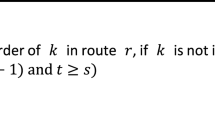Abstract
In view of the location privacy problem of participants in mobile crowd sensing, this paper proposes a method to protect the location of participants based on local differential privacy preference. First of all, the map is discretized and mapped from two-dimensional space to one-dimensional space by means of MHC, which can guarantee the spatial correlation, and the map is segmented based on the density of participants using genetic algorithm; Then, according to the personal privacy needs of current location, two different local differential privacy perturbation methods, RAPPOR and k-RR, are chosen by participants; Next, the chosen local differential privacy is used to perturb the location of each participant in the region after segmentation, and the perturbed location data are sent to the data collection server to protect the participants’ locations. Finally, the simulation experiments are carried out and show that map density segmentation can reduce the privacy cost, and the method proposed in this paper is superior to the method using k-anonymous and differential privacy and the method using Hilbert and differential privacy in terms of running time and average relative error, and prove that the execution time is lower and the data availability is improved.












Similar content being viewed by others
References
Zhang X, Yang Z, Sun W et al (2017) Incentives for Mobile Crowd Sensing: A Survey[J]. IEEE Commun Surv Tutorials 18(1):54–67
Guo B, Wang Z, Yu Z et al (2015) Mobile crowd sensing and computing: The review of an emerging human-powered sensing paradigm[J]. ACM Comput Surv 48(1):7
Guo B, Yu Z, Zhou X, et al. (2014) From participatory sensing to Mobile Crowd Sensing[C]. Proceedings of the 2014 IEEE International Conference on Pervasive Computing and Communications Workshops, 593-598
Gruteser M, Grunwald D (2003) Anonymous usage of location-based services through spatial and temporal cloaking[C]. Proceedings of the 1st ACM International Conference on Mobile Systems, Applications and Services, 31-42
Chow CY, Mokbel MF, Aref WG (2009) Casper: query processing for location services without compromising privacy[J]. ACM Trans Database Syst 34(4):1–48
BERESFORD A, STAJANO F (2003) Location privacy in pervasive computing[J]. IEEE Pervasive Comput 2(1):46–55
Palanisamy B, Liu L (2015) Attack-resilient mix-zones over road networks: architecture and algorithms[J]. IEEE Trans Mob Comput 14(3):495–508
Dwork C, Kenthapadi K, McSherry F et al. (2006) Our data, ourselves: privacy via distributed noise generation[C]. Proceedings of the 25th Annual International Conference on the Theory and Applications of Cryptographic Techniques, 486-503
Dwork C, McSherry F, Nissim K, et al. (2006) Calibrating noise to sensitivity in private data analysis[C]. Proceedings of the 3rd Theory of Cryptography Conference, 265-284
Anders M (2013) Differential privacy for location- based systems[C]. Proceedings of the 2013 ACM SIGSAC conference on Computer & Communications security, 901-914
Dewri R (2013) Local differential perturbations: location privacy under approximate knowledge attackers[J]. IEEE Trans Mob Comput 12(12):2360–2372
Jin X, Zhang R, Chen Y et al. (2016) DP Sense: Differentially private crowdsourced spectrum sensing[C]. Proceedings of the ACM Conference on Comput.Commun.Secur, 296-307
Tong W, Hua J, Zhong S (2017) A jointly differentially private scheduling protocol for ridesharing services [J]. IEEE Trans Inf Forensics Secur 12(10):2444–2456
Kearns M, Pai M.M, Roth A et al. (2014) Mechanism design in large games: Incentives and privacy[C]. Proceedings of the ACM ITCS, 403-410
Jin X, Zhang Y (2016) Privacy-preserving crowdsourced spectrum sensing[C]. Proceedings of the IEEE INFOCOM, 1-9
Kasiviswanathan S P, Lee H K, Nissim K et al. (2008) What can we learn privately[C]. Proceedings of the 49th Annual IEEE Symp.on Foundations of Computer Science, 531-540
Duchi J C, Jordan M I, Wainwright M J (2013) Local privacy and statistical minimax rates[C]. Proceedings of the 54th Annual IEEE Symp.on Foundations of Computer Science, 429-438
Kairouz P, Oh S, Viswanath P (2014) Extremal mechanisms for local differential privacy[J]. Advances in Neural Information Processing Systems, 2879-2887
Erlingsson Ú, Pihur V, Rappor KA (2014) Randomized aggregatable privacy-preserving ordinal response[C]. Proceedings of the 2014 ACM SIGSAC Conf.on Computer and Communications Security, 1054-1067
Dwork C, Lei J (2009) Differential privacy and robust statistics[C]. Proceedings of the 41st Annual ACM Symp.on Theory of Conputing, 371-380
Kairouz P, Oh S, Viswanath P (2016) Extremal mechanisms for local differential privacy[J]. J Mach Learning Res 17(1):492–542
Zhang XJ, Gui XL (2016) Jiang J H. A user-centric location privacy-preserving method with differential perturbation for location-based services[J]. J Xi'an Jiaotong Univ 50(12):79–86
Hu YZ, Zhang FB (2015) GanZ C, et al. QoS modeling and evaluation of mobile application service based on scene[J]. J Commun 36(Z1):110–117
Kairouz P, Bonawitz K, Ramage D (2016) Discrete distribution estimation under local privacy[C]. Proceedings of the 33rd Int’l Conf.on Machine Learning, 2436-2444
Bi XD, Liang Y, Shi HZ et al (2017) A parameterized location privacy protection method based on two-level anonymity[J]. J Shandong Univ 5(52):75–84
Huo Z (2018) Meng X F. A trajectory data publication method under differential privacy[J]. Chin J comput 41(2):400–412
Acknowledgements
This present research work was supported by the National Natural Science Foundation of China (61403109, 61202458), the Specialized Research Fund for the Doctoral Program of Higher Education of China (20112303120007), the Heilongjiang Natural Science Foundation (F2017021), the Scientific Research Fund of Heilongjiang Provincial Education Department (12541169) and the Specialized Research Fund for Scientific and Technological Innovation Talents of Harbin (2016RAQXJ036).
Author information
Authors and Affiliations
Corresponding author
Additional information
Publisher’s note
Springer Nature remains neutral with regard to jurisdictional claims in published maps and institutional affiliations.
Rights and permissions
About this article
Cite this article
Wang, J., Wang, Y., Zhao, G. et al. Location protection method for mobile crowd sensing based on local differential privacy preference. Peer-to-Peer Netw. Appl. 12, 1097–1109 (2019). https://doi.org/10.1007/s12083-019-00774-8
Received:
Accepted:
Published:
Issue Date:
DOI: https://doi.org/10.1007/s12083-019-00774-8




